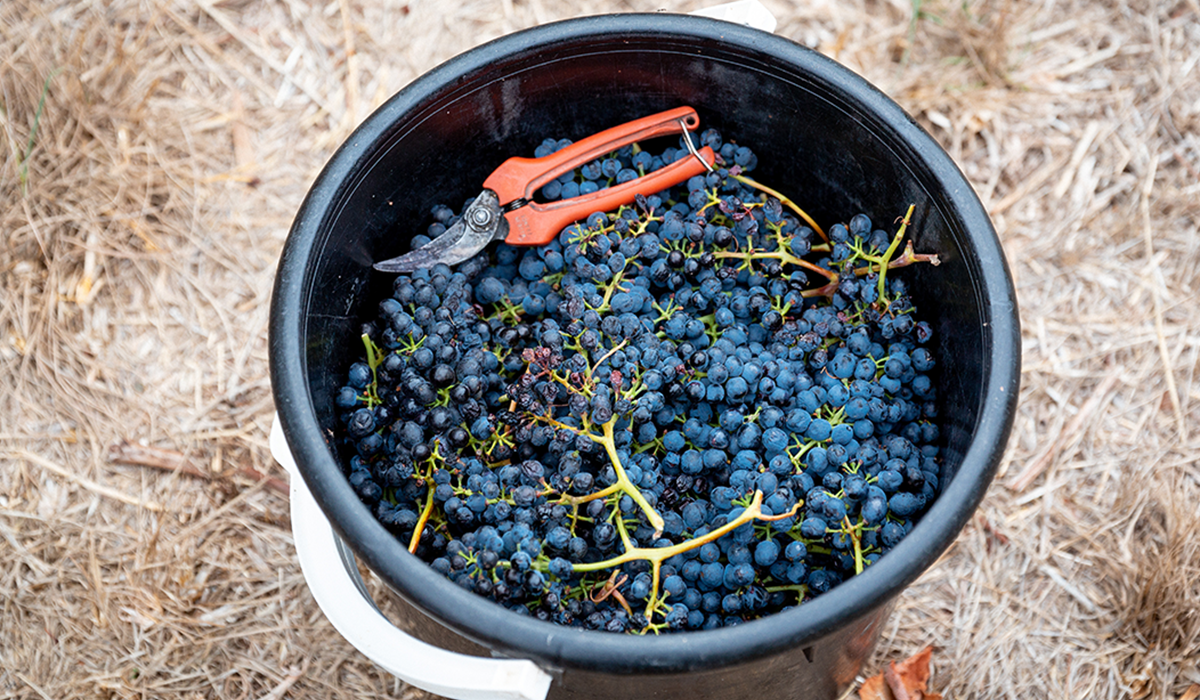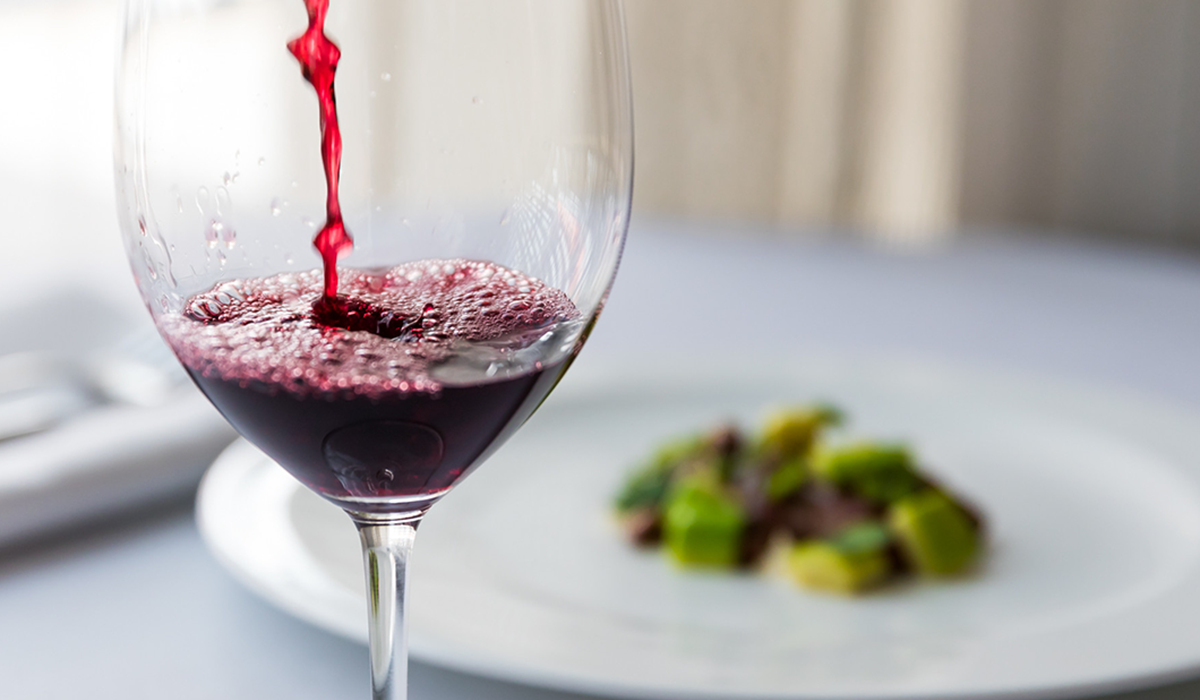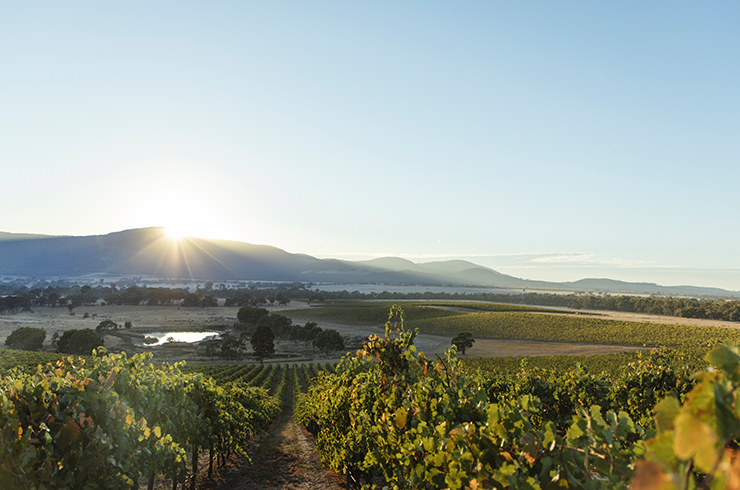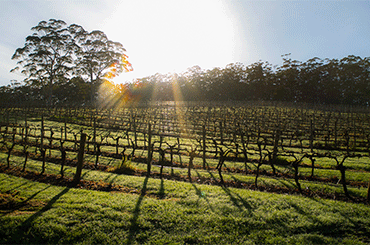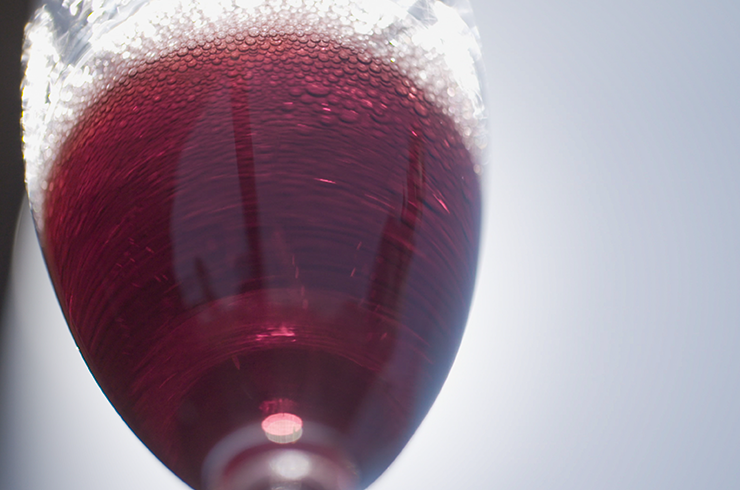Go to section: Shiraz tasting characteristics | Origins of shiraz | How to pair food with shiraz | Serving temperature for shiraz | The best Australian shiraz regions
Shiraz wine
There is no wine variety more synonymous with Australia than shiraz. It’s a staple at tasting benches, the nation’s greatest wine export and our most widely planted grape. Whether you’re after an easy drinking red to pair with dinner or a world-class bottle to add to the cellar, there’s a style of shiraz to suit. Grown all over and adaptable across most soil types and climates in this country, shiraz (or syrah, as it’s sometimes called) is our most beloved grape.
Shiraz tasting characteristics
As we’ve established, shiraz can create wines with varying flavour profiles and structures depending on where it’s grown and how it’s made. For ease, let’s focus on Australian shiraz.What is Shiraz?
This grape thrives in moderate to warm climates, but it’s increasingly found in cooler regions. The typical flavours of Australian shiraz are spice, blue fruit, black fruit and pepper. If a winemaker is looking to produce a full-bodied style, then you can expect rich, ripe and intense fruit flavours, while cooler styles lean more towards medium-bodied and spicy.
Historically, Max Schubert (the creator of Penfolds Grange) fundamentally changed the way Australian winemakers approach shiraz. He kick-started the process of using juice run-off and open vats to regulate the temperature of ferments and added cooler-grown, higher-acid grapes to give the shiraz freshness, vibrancy and that deep colour.
Origins of shiraz
Nowadays, shiraz is planted and grown all over the world. But its first recorded appearance was in the Isere district of the Rhone-Alps region of France, where it was the offspring of the red grape dureza and the white grape mondeuse blanche.Until the first shiraz cuttings were brought to Australia in 1832 by viticulturist James Busby, the northern Rhone was the only region where the grape was grown. There, it was the exclusive red grape in Hermitage, Côte-Rôtie, Cornas, Saint-Joseph and Crozes-Hermitage.
For many years, Hermitage was taken to Bordeaux for blending. In fact, the wines that read “Hermitage” sold for higher prices than their unblended siblings. Its reputation was building.
Towards the end of the 19th century, English connoisseur George Saintsbury declared that “Hermitage is the manliest wine I have ever drunk”.
How to pair food with shiraz
Shiraz or syrah can handle big and intense dishes such as slow-cooked lamb shanks with roast potatoes, a home-cooked roast and even a rich pastas (like truffle and porcini pasta). And if it goes on the barbecue, it's likely to pair well with shiraz (try scotch fillet or grilled eggplant).
Serving temperature for shiraz
The ideal serving temperature for shiraz is 16–18 degrees.-
THE BEST AUSTRALIAN shiraz TASTING NOTES
-
Henschke
Hill of Grace 2017
Eden Valley -
O’Leary Walker Wines
The Sleeper Reserve Shiraz 2018
Barossa Valley -
Penfolds
G5 Non Vintage
South Australia -
Scotchmans Hill
Bellarine Peninsula Shiraz 2019
Geelong -
Torbreck Vintners
The Laird 2017
Barossa Valley -
Bondar Wines
Violet Hour Shiraz 2020
McLaren Vale -
Bondar Wines
Midnight Hour 2020
Adelaide Hills -
Chris Ringland
Hoffmann Vineyard Shiraz 2013
Barossa Valley -
Eldorado Road
Perseverance Old Vine Shiraz 2019
Beechworth -
Frankland Estate
Smith Cullam Syrah 2020
Frankland River
The best Australian shiraz wine regions
Shiraz is grown in almost every wine region of Australia, and each has a distinctive expression. Let’s break down some of the most famous:
Barossa Valley
Home to the oldest vines and best-known wines, the Barossa style is full-bodied and richly textured. If you like your red wine packed with dark fruit and spice, then Barossa shiraz is for you.
Eden Valley
The Eden Valley is a part of the greater Barossa zone, but due to its higher elevation, picking here can take place up to two weeks later than the Barossa Valley. Expect medium- to full-bodied shiraz with blackberry and pepper notes. James says: “Eden Valley shiraz is exceptionally graceful, combining intensity with finesse.”
Clare Valley
Shiraz from South Australia’s Clare Valley benefits from long, warm days and cool nights, meaning big flavour and excellent acid retention. Despite being a region famed for its riesling, shiraz from here is well-loved, featuring a hint of liquorice. James says: “This region introduces an inner core of steel, which may or may not be immediately apparent, but which gives the wines enough structure to age for decades.”
Heathcote
Shiraz loves the climate and ancient Cambrian soils of Victoria’s Heathcote. The weight and texture of the wines here are similar to those of the Barossa but with even more intensity. James says: “The wines are mouth-filling and mouth-coating, densely coloured and richly flavoured, their texture akin to a great tapestry, helping to highlight their multifaceted taste.”
Hunter Valley
The Hunter Valley in New South Wales is Australia’s oldest wine region, and shiraz is one of its principal varieties. The growing season here is typically warm but without big heat spikes. That means the shiraz produced is more medium-bodied and savoury.
McLaren Vale
Shiraz from McLaren Vale is typically full-bodied with rich blue fruit and a hint of chocolate, and it’s one of the bosses of Australian shiraz. James says: “The wines have an effortless opulence that’s the envy of most countries that have recently become converts to the variety.”
Yarra Valley
While not historically a go-to for the variety, shiraz is on the rise in this region. The regional style is elegant, aromatic, often more medium-bodied, with an array of red and purple fruits, plus spicy complexity. And with the cooler climate, it often comes with the “syrah” label attached.
Grampians
This Victorian region is responsible for several sought-after shiraz wines out of its historic wineries. It is particularly well known for pioneering a peppery style of shiraz that has since piqued the interest of others around Australia.
Adelaide Hills
South Australia is a heartland for luscious shiraz, and it has a huge following, but the state’s style isn’t homogenous. The Adelaide Hills is one region that’s set apart by its higher altitude and cooler climate, producing medium-bodied, refined shiraz styles.Featured wineries
More FromRELATED Articles
-
Meet the Winemaker
Three winemakers on Australian shiraz
21 Mar 2023 -
Meet the Winemaker
Winemakers on Australian shiraz
16 Mar 2023 -
Wine Lists
Shiraz wines to try
13 Jun 2024 -
Wine Lists
Three shiraz to try
23 Mar 2023 -
Top Rated
Top Rated: Shiraz
-
News
Best Australian sparkling shiraz
17 Sep 2024 -
Top Rated
Best shiraz in Australia 2025
